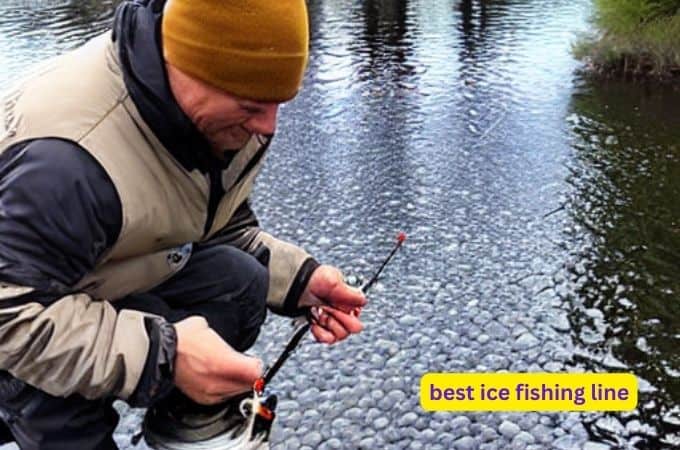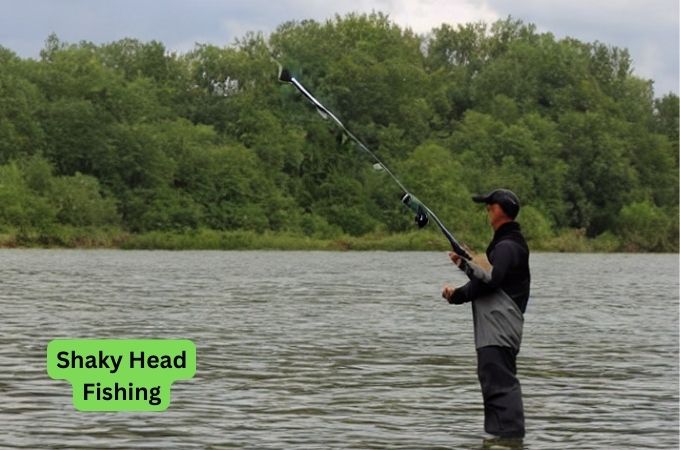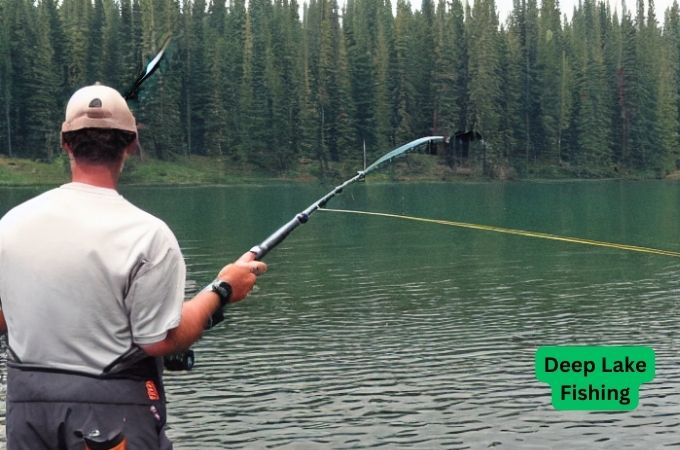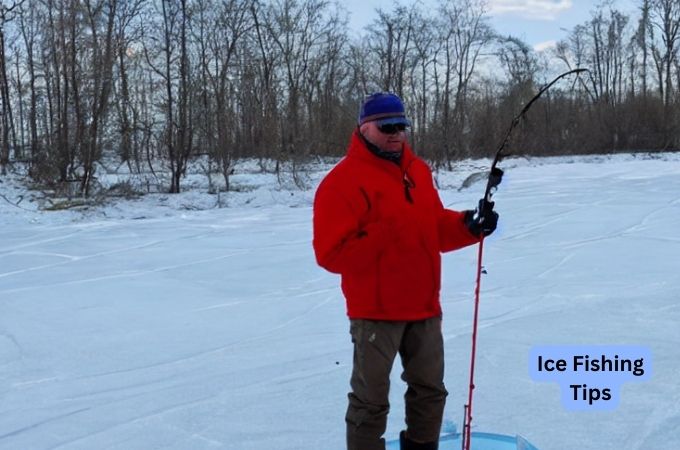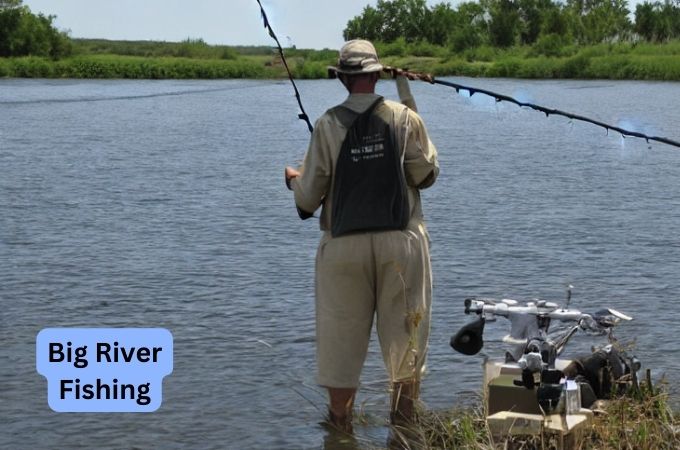The Ultimate Guide: What Is The Best Saltwater Fishing Line?
Looking for the best fishing line for saltwater? Look no further, as we’ve got you covered! When it comes to saltwater fishing, having the right fishing line is essential for a successful and enjoyable experience. The saltwater environment can be harsh on lines, with factors like corrosion and abrasion resistance coming into play. So, what is the best fishing line for saltwater? Let’s dive in and explore some top contenders that will meet your needs and provide unmatched durability and strength.
What is the Best Fishing Line for Saltwater?
When it comes to saltwater fishing, having the right fishing line can make all the difference in your success. Saltwater environments present unique challenges, including corrosive saltwater, strong currents, and powerful fish species. To ensure you have the best fishing line for saltwater, there are several factors to consider, such as line type, strength, abrasion resistance, and visibility. In this comprehensive guide, we will explore these factors and recommend some of the top fishing lines for saltwater fishing.
Section 1: Understanding the Different Types of Fishing Lines for Saltwater
When it comes to saltwater fishing lines, there are three main types to choose from: monofilament, fluorocarbon, and braided lines. Each type has its own advantages and considerations that make them suitable for different fishing scenarios.
1.1 Monofilament Fishing Line
Monofilament fishing lines are a popular choice for saltwater anglers due to their versatility and affordability. They are made from a single strand of nylon, which offers excellent shock resistance and knot strength. Monofilament lines also have good visibility above water, allowing for better control and line management. However, they tend to have higher stretch compared to other line types, which can reduce sensitivity and hook-setting power.
1.2 Fluorocarbon Fishing Line
Fluorocarbon lines are known for their incredible abrasion resistance and invisibility underwater. These lines are made from a combination of fluoropolymer materials, making them denser than water and virtually invisible to fish. Fluorocarbon lines sink faster and have less stretch than monofilament lines, providing better sensitivity and hook-setting power. However, they are more expensive than monofilament lines and may not be as suitable for topwater fishing or situations that require buoyancy.
1.3 Braided Fishing Line
Braided fishing lines are made from multiple strands of high-density polyethylene fibers, resulting in a strong and durable line. These lines have a small diameter-to-strength ratio, allowing for increased line capacity on the reel. Braided lines have minimal stretch, excellent sensitivity, and high abrasion resistance, making them ideal for targeting large and powerful saltwater species. However, they can be more visible in clear water and require additional precautions to prevent line digging into the spool.
Section 2: Factors to Consider When Choosing a Fishing Line for Saltwater
Selecting the best fishing line for saltwater involves considering various factors that can affect your fishing experience. Here are some important factors to keep in mind:
2.1 Line Strength
The strength of your fishing line is crucial when targeting saltwater species known for their strength and powerful runs. In saltwater fishing, it is recommended to use lines with high tensile strength, typically ranging from 20 to 50 pounds or more, depending on your target species.
2.2 Abrasion Resistance
Saltwater environments can be harsh on fishing lines due to the presence of sand, rocks, and marine life with abrasive surfaces. Opting for a line with excellent abrasion resistance will help prolong its lifespan and prevent frequent line breakages when fishing in rough conditions.
2.3 Visibility
While some anglers prefer low-visibility lines to avoid startling fish, others may opt for high-visibility lines to keep track of their line above water. Clear or low-visibility lines such as fluorocarbon are often preferred when targeting wary fish species, while high-visibility lines like monofilament can aid in line management and strike detection.
Section 3: Top Fishing Lines for Saltwater
Now that we have a better understanding of the different fishing line types and important factors to consider, let’s explore some of the top fishing lines specifically designed for saltwater fishing:
3.1 PowerPro Spectra Fiber Braided Fishing Line
The PowerPro Spectra Fiber Braided Fishing Line is a highly recommended choice for saltwater anglers. Made from ultra-strong braided spectra fiber, it offers exceptional strength and durability. This line has a small diameter, allowing for increased line capacity and long casts. It also has high abrasion resistance, making it suitable for various saltwater fishing conditions.
3.2 Seaguar Blue Label Fluorocarbon Leader Line
Seaguar Blue Label Fluorocarbon Leader Line is a popular choice for saltwater fishing due to its superior strength, invisibility underwater, and excellent knot strength. This line is resistant to UV rays and chemicals found in saltwater, ensuring its performance and longevity. It has a high impact and tensile strength, making it ideal for targeting larger saltwater species.
3.3 Berkley Trilene Big Game Monofilament Fishing Line
Berkley Trilene Big Game Monofilament Fishing Line is a reliable and affordable option for saltwater anglers. It offers high tensile strength and excellent shock resistance, allowing for successful hook sets and battles with strong fish. This monofilament line also has good abrasion resistance, making it suitable for fishing in rugged saltwater environments.
Section 4: Tips for Maintaining and Caring for Saltwater Fishing Lines
To maximize the lifespan and performance of your saltwater fishing line, here are some essential tips for maintenance and care:
4.1 Rinse After each Use
Saltwater can corrode and degrade fishing lines over time. Therefore, it is crucial to rinse your fishing line with freshwater after each use to remove salt residue and prevent damage.
4.2 Avoid Overexposure to UV Rays
Extended exposure to sunlight and UV rays can weaken fishing lines. When not in use, store your fishing lines in a cool, dark place or use line conditioner to protect them from UV damage.
4.3 Inspect for Wear and Tear
Regularly inspect your fishing line for signs of wear, such as frays, nicks, or abrasions. Replace any damaged sections to prevent unexpected line breakages during your fishing trips.
Conclusion:
Choosing the best fishing line for saltwater fishing requires considering factors such as line type, strength, abrasion resistance, and visibility. Monofilament, fluorocarbon, and braided lines each have their own advantages and considerations. By understanding these factors and exploring top-rated fishing lines like PowerPro Spectra Fiber, Seaguar Blue Label Fluorocarbon, and Berkley Trilene Big Game, you can make an informed decision for your saltwater fishing adventures. Remember to properly maintain and care for your fishing lines to ensure optimal performance and longevity. Happy saltwater fishing!
Frequently Asked Questions
What factors should I consider when choosing the best fishing line for saltwater?
When selecting a fishing line for saltwater fishing, there are several important factors to consider. First, you should consider the line’s strength and durability, as saltwater fish are often larger and more powerful than freshwater species. Look for a line with a high pound-test rating and excellent abrasion resistance. Secondly, consider the line’s visibility in the water. Clear or low-visibility lines are usually preferred to reduce the chances of fish detecting the line. Lastly, the type of fishing you’ll be doing, such as bottom fishing or trolling, may influence your choice of line material (monofilament, fluorocarbon, or braided) and diameter.
What are the advantages of using braided fishing lines in saltwater?
Braided fishing lines have several advantages when used in saltwater fishing. They are incredibly strong and offer excellent sensitivity, allowing you to feel even the slightest nibble. Braided lines also have a smaller diameter compared to monofilament lines with the same strength, which means you can spool more line onto your reel. Additionally, they have minimal stretch, providing immediate hooksets and better control over fighting fish. However, keep in mind that braided lines tend to be more visible in clear water, so consider using a fluorocarbon leader to increase invisibility.
Should I use a monofilament or fluorocarbon fishing line for saltwater fishing?
Both monofilament and fluorocarbon fishing lines have their advantages for saltwater fishing. Monofilament lines are versatile and affordable, with good shock resistance and knot strength. They also float, making them suitable for topwater fishing. On the other hand, fluorocarbon lines have the advantage of being nearly invisible underwater due to their refractive index, making them ideal for clear water and wary fish. Fluorocarbon lines are also more abrasion-resistant than monofilament lines, making them better suited for fishing around structure or rough surfaces.
What pound test line should I use for saltwater fishing?
The pound test line you should use for saltwater fishing depends on the target species and fishing conditions. For smaller inshore species like trout or redfish, a line in the range of 8 to 20 pounds could be sufficient. If you’re targeting larger game fish like tarpon or tuna, you may need a line with a higher pound test, ranging from 30 to 80 pounds or more. In general, it’s better to err on the side of caution and use a slightly heavier line when fishing in saltwater, as the fish can be stronger and more challenging to reel in.
How often should I replace my fishing line when saltwater fishing?
It’s important to regularly check and replace your fishing line when fishing in saltwater. Saltwater conditions can be harsh on lines, causing them to weaken or become damaged over time. How often you replace your line depends on several factors, such as how frequently you fish, the conditions you fish in, and how well you maintain and care for your line. As a general guideline, it is recommended to replace your line at least once a year or sooner if you notice any signs of wear, such as fraying, discoloration, or reduced strength.
What are the benefits of using a fluorocarbon leader with my fishing line in saltwater?
Using a fluorocarbon leader with your fishing line in saltwater offers several benefits. Fluorocarbon leaders are nearly invisible underwater, reducing the chances of fish being spooked by the line. This can be especially important when fishing in clear water or targeting finicky species. Fluorocarbon leaders also have excellent abrasion resistance, which is advantageous when fishing around structures like reefs or rocks. Furthermore, fluorocarbon has a higher density than water, causing it to sink faster and allow your bait or lure to reach the desired depth more quickly.
Final Thoughts
In conclusion, when considering the best fishing line for saltwater, it is crucial to prioritize durability and strength. The ideal line should be resistant to corrosion and able to withstand the harsh conditions of saltwater environments. Additionally, a line with high tensile strength and low stretch is preferable for increased sensitivity and better hook sets. Factors such as the type of fish being targeted and the fishing technique used should also be taken into account. By carefully assessing these factors, anglers can choose a fishing line that meets their specific needs and ensures a successful saltwater fishing experience.
